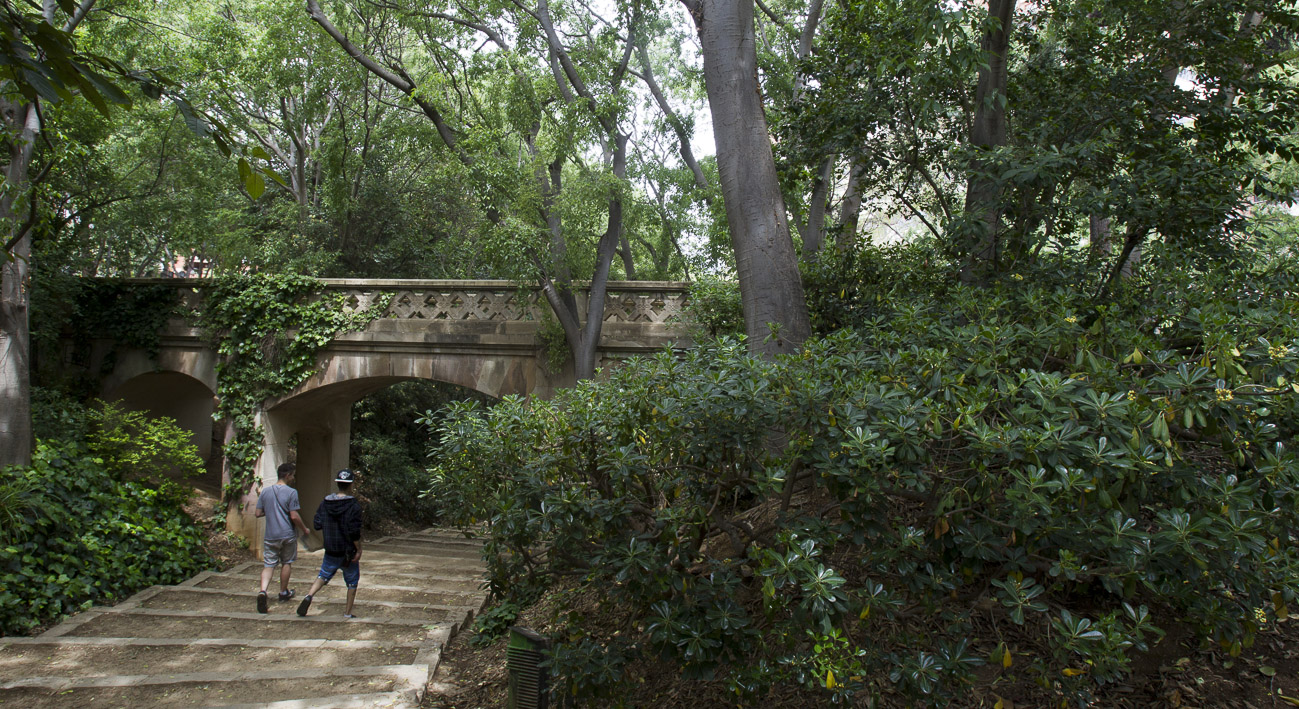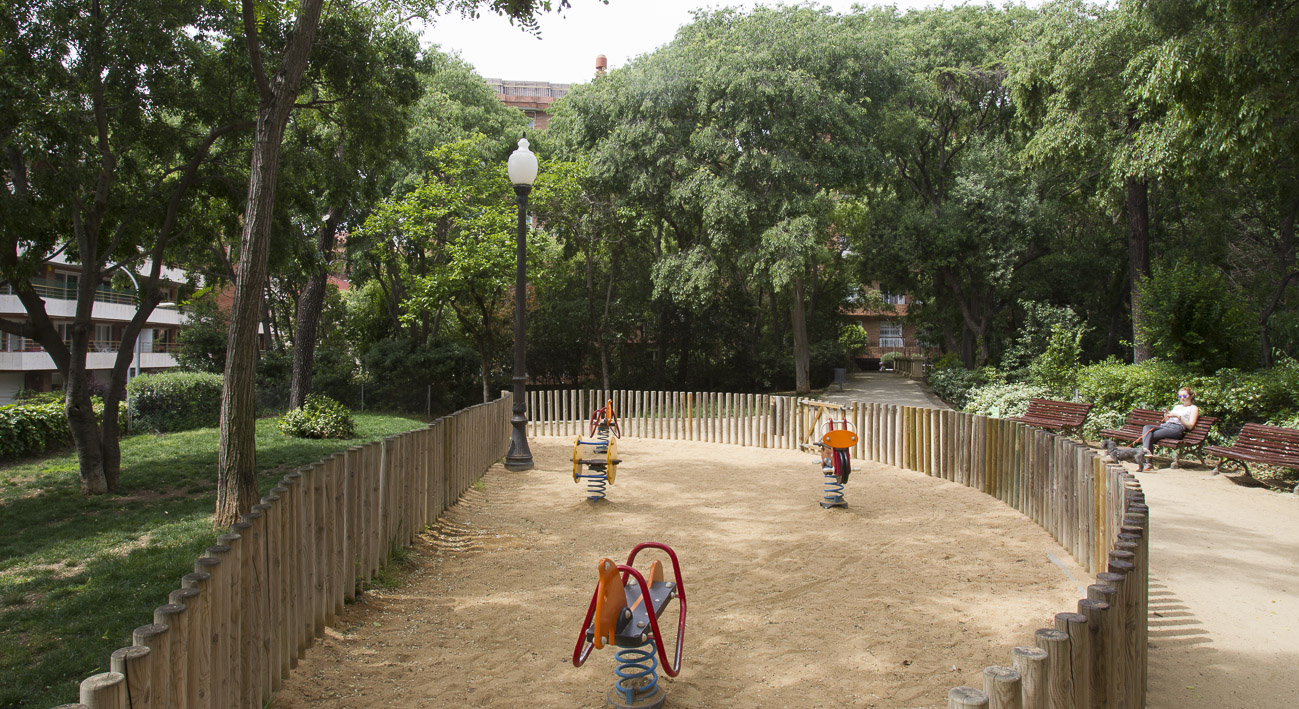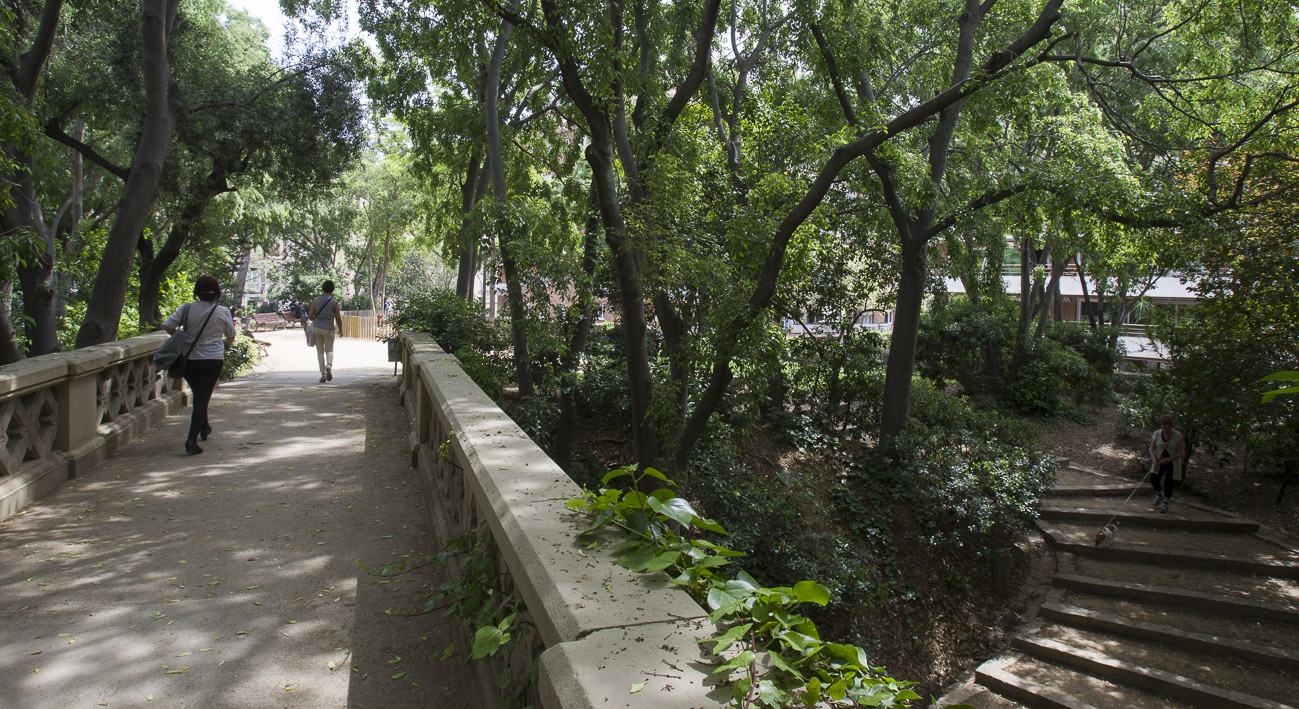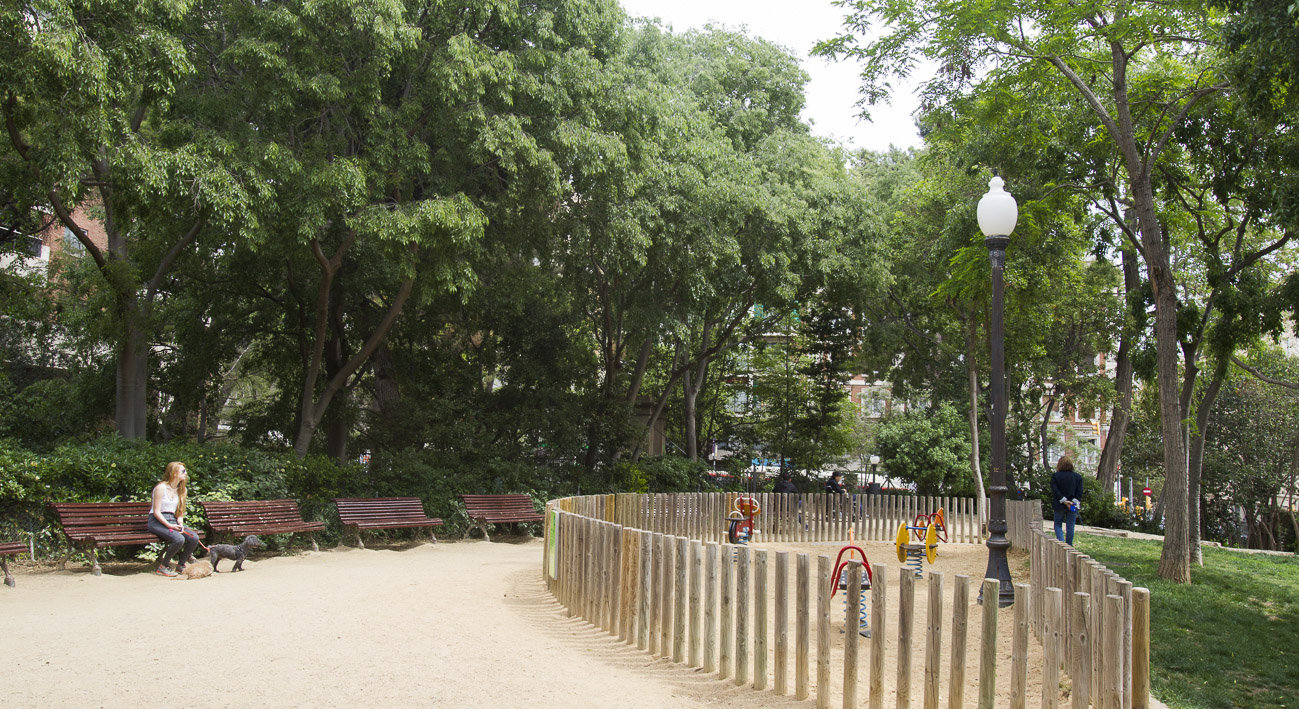The gardens are a product of their time. Their romantic nature comes from their architectural features. Ca n’Altimira, a former country mansion, is on a higher level than the rest of the land, a feature that allowed two distinct areas to be established there.
The two levels are linked by a couple of bridges, one of which is suspended in the air. Their meeting point is a hypostyle hall located at the end of a gravelled square in the lowest part of the park. This square can be reached by two wide flights of stairs with a very gentle slope and gravel steps with a stone finish.

History
They were originally built in the middle of the 19th century, on Dr Josep Altimira’s Sant Gervasi estate. This wealthy and rather extravagant character suffered a reverse of fortune that left him destitute and, having no heirs of his own, he gave his properties away to the Missionary Sisters of the Immaculate Conception, who cared for him up to his death.
The nuns set up a school on his estate, the Immaculada Concepció school, a building that takes up a large part of the old gardens, which had already been encroached upon with the opening up of two new streets, C/ Horaci and C/ Mandri.
The small green grounds we know today are therefore only a part of what may once have been truly unique gardens, with underground artificial grottos that linked the hypostyle hall to the owner’s house.
As Francesc Curet explains in his book Visions barcelonines, Dr Altimira filled the ponds that used to be in the gardens with sardines and, to keep them alive, had sea water brought there every day. He held extravagant parties there and sometimes even flooded the hall and lower part of the gardens so guests could sail around in little boats.

Biodiversity
As they were created at the end of the 19th century, the gardens have trees that are now a hundred years old, such as the Aleppo pines
(Pinus halepensis) and river oaks (Casuarina cunninghamiana) right by the park’s main entrance, on C/ Mandri.
The other hundred-year-old specimens include southern nettle trees
(Celtis australis), stone pines (Pinus pinea), Atlas cedars (Cedrus atlantica), Siberian elms
(Ulmus pumila) and black locusts
(Robinia pseudoacacia). Among the more recent plants, there are mountain laurels (Sophora secundiflora), purple-leaf cherry plum
(Prunus cerasifera ‘Atropurpurea’) and kurrajong
(Brachychiton populneus).
Another species worth mentioning here is the cat’s claw creeper (Doxantha unguis-cati), a very decorative deciduous climbing tree that hangs from one end to the other of the highest part of the hypostyle hall facade. Multi-flowered, when they shed their leaves their branches stay covered in seeds that are very long (25-30 cm) and which change colour from green to dark brown as they dry.

Art and Architecture
Besides the stone bridge and wooden-paved steel-suspension bridge (a copy of the one designed by John Roebling for the Niagara Falls), Ca n’Altimira’s most notable architectural feature is the large hypostyle hall whose vaults are held up by 36 very tall, Romanesque-style sandstone columns. There is a niche at one side of the square, located on the old mansion’s remaining wall, where a fountain has been added.
-
- Phone number
- Tel.: 010
-
- Titularity
- Public center
- Address:
- Maó, 9
- Districte:
- Sarrià-Sant Gervasi
- Neighborhood:
- Sant Gervasi - la Bonanova
- City:
- Barcelona
Timetable
| Periode | Dies | Hores | |
|---|---|---|---|
| de l'1 de novembre al 31 de març |
Tots els dies | de 10:00 h a 19:00 h | |
| de l'1 d'abril al 31 d'octubre |
Tots els dies | de 10:00 h a 21:00 h |
aproximada, en funció de
l'horari solar (tanquen
quan es fa fosc, al capvespre)
- Sections of this equipment
- Espai per a gossos deslligats als jardins de ca n'altimira
- Àrea de joc infantil






